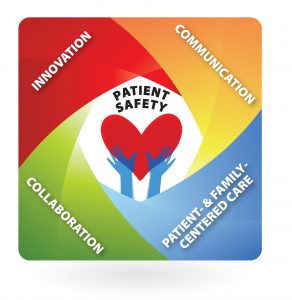Progress towards a smarter NHS depends on the engagement of clinicians and, increasingly, the patients themselves’ Debjani Duncan.
Clinical engagement is not a new concept for procurement but the ways in which it is achieved and the agenda it sets out to address now needs to change. The current drive within the NHS is firmly concentrated on delivering responsive, convenient and personalised services for all patients regardless of demographics and diagnosis. This has created a shift in emphasis on the clinicians’ agenda which is far more all-encompassing than the business of delivering high quality healthcare. Increasingly the mandate handed down within the NHS Improvement Plan1 requires a multi-faceted and inclusive approach to reform which covers organisational and sector boundaries.
These new challenges are set to create dramatic impacts as the patient journey reduces to 18 weeks by 2008 and the ten high impact changes2 proposed by the Modernisation Agency are addressed. That’s not to mention the implementation of national service frameworks and other clinical governance or safety initiatives. Within this landscape therefore procurement personnel, whether clinical, NHS-experienced or otherwise, will have to develop a real understanding of where they fit on the clinicians’ radar and utilise that understanding to maximum effect.
I believe that this is the only way that embedded change will take place and commitment and cooperation at all levels will be essential. Thankfully it is little disputed that to achieve this will require far more engagement of the principal stakeholders’ namely clinicians and, increasingly, patients themselves.
In addition, outside of the day job the six main challenges set out by government for clinicians to address partnership, professions and workforce, performance, patient empowerment, access and prevention are the priorities that they are working to. Industry and procurement have to mirror this by tailoring their efforts and services accordingly, otherwise true engagement will not happen. The old what’s in it for me adage still rings true if you cannot help address clinicians’ most pressing needs, there will be no incentive for them to cooperate and embrace the behaviours we desire from them. The only way to achieve this is to find ways of directly relating procurement activity to the delivery of these challenges and demonstrate tangible ways in which we can contribute.
We must therefore be aware of these changes to keep abreast of clinical needs and to help those who facilitate the purchasing of clinical products to achieve the collective goals of a smarter NHS. As we know, there is still a healthy scepticism among clinicians about the procurement process. However, by recognising the skills and knowledge they possess, and tapping into what fires them up, efforts at getting innovative products to market, ensuring sustainability over time and building relationships with product users to modernise and improve healthcare, will be greatly enhanced.
The demographic shift towards an ageing population means that the overall market for healthcare will continue to grow. In addition, the population is becoming more demanding due to increasing awareness of the possibilities that might be achieved through the use of new technologies, materials, systems and processes in the delivery of healthcare.
The main drivers for the NHS in the future will be the increasing trend towards community-based solutions to healthcare. This shifting emphasis represents a major challenge for those delivering the service and an opportunity for the design of new products and services tailored to the more local and personalised environments in which they will be used. Consideration of design will become more critical, as the types of medical devices and services used in hospitals tend to become more stigmatising when used in the home. With these changing patterns of care there is a clear need for the NHS to foster and adopt new solutions to healthcare problems. What is not always so clear is how the service can specify and procure in a timely and transparent manner what it needs.
For businesses, this situation presents multiple barriers through lack of understanding of the process of clinical procurement. The increasing trend to employ strategically placed clinical staff within collaborative procurement hubs and confederations is set to address some of the main issues, by working in partnership with local staff within trusts to address the lack of resource to undertake clinical trials’ and/or access to patients for the trials, as well as the multiple approval processes to get into each trust’s supply chain. Fundamentally though, there are now increasingly clear pathways developing for business and clinicians to share knowledge and intelligence on what the NHS is trying to procure and how that might be supplied through the conduit of clinically-trained procurement personnel.

